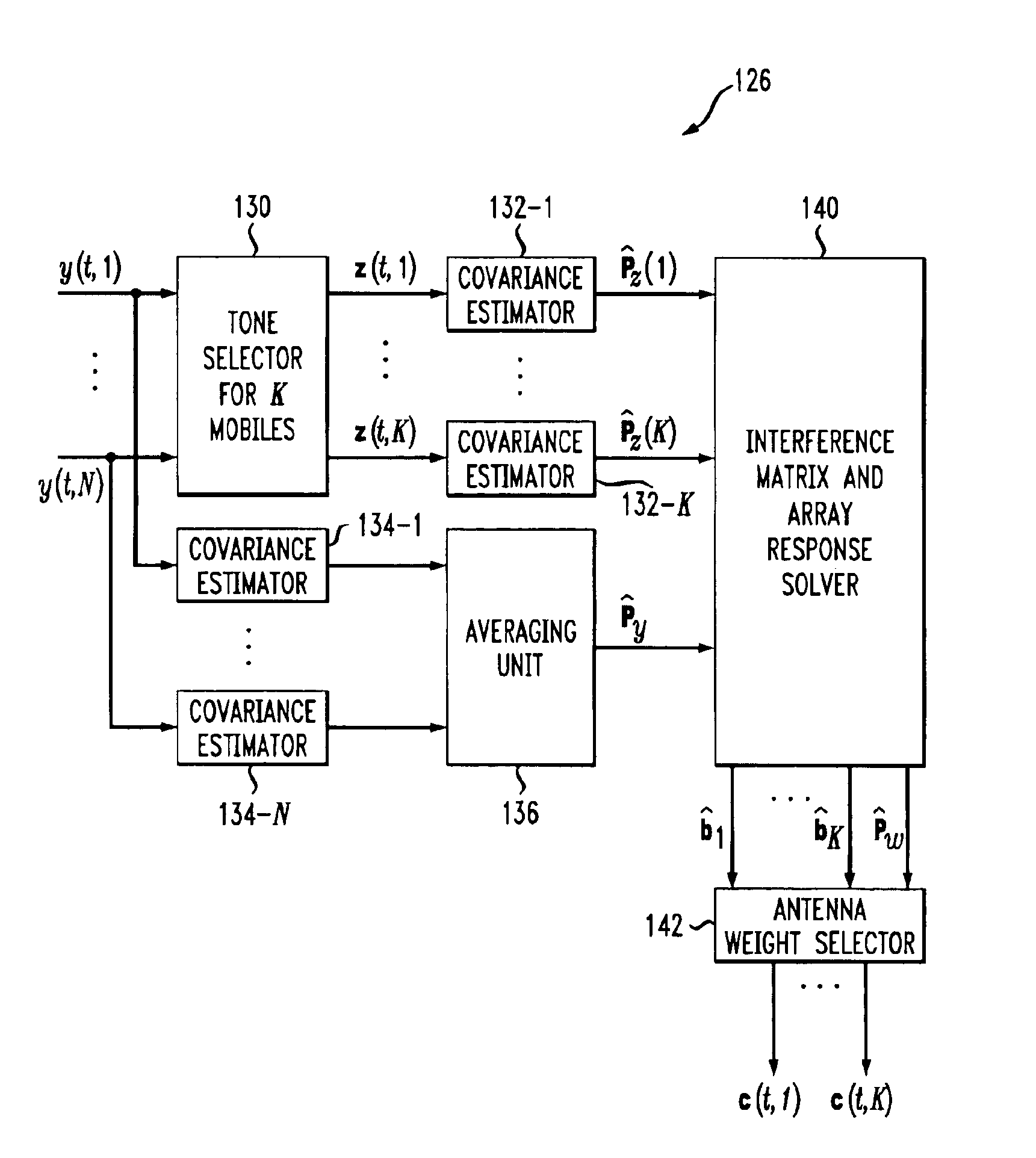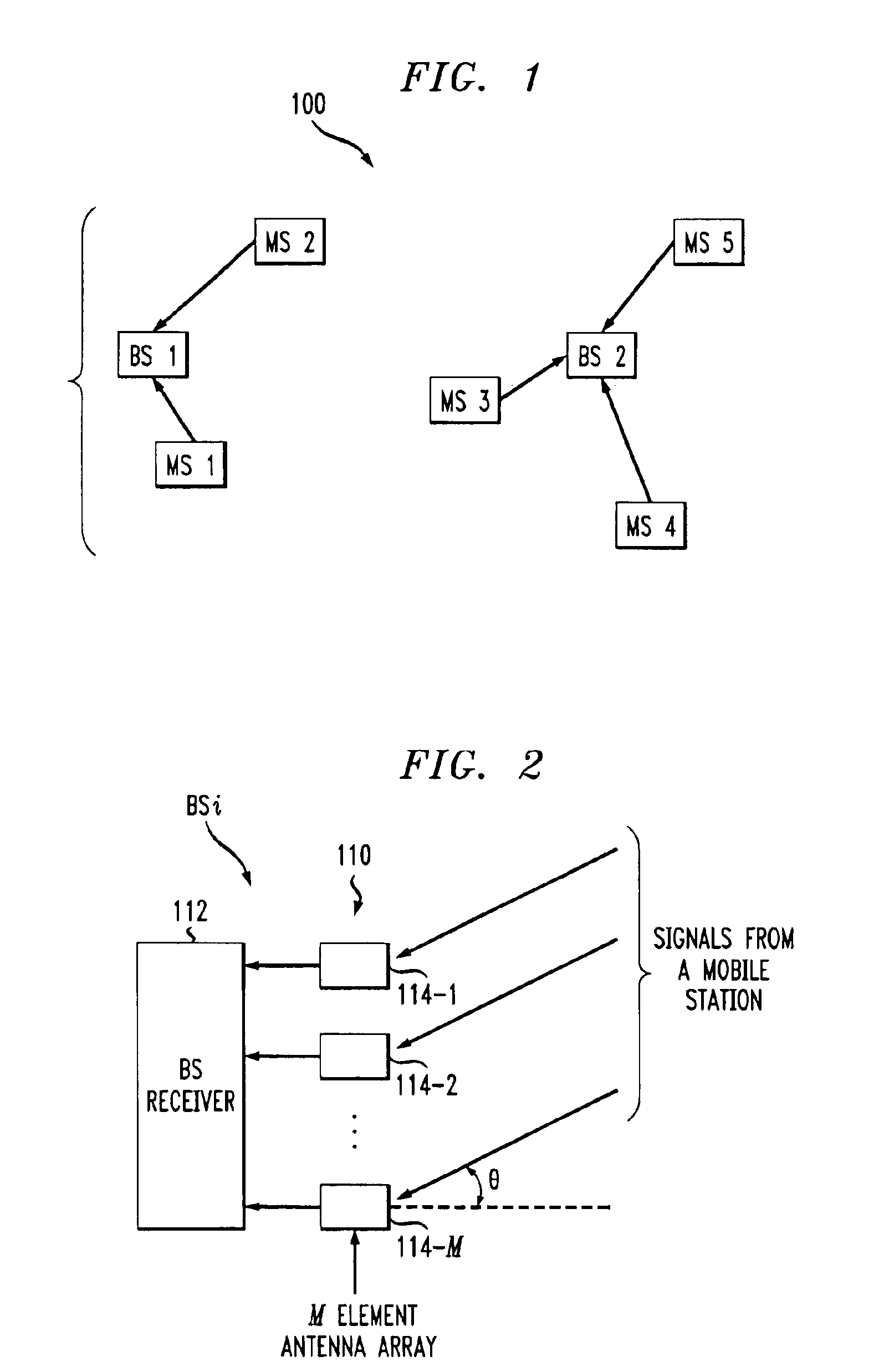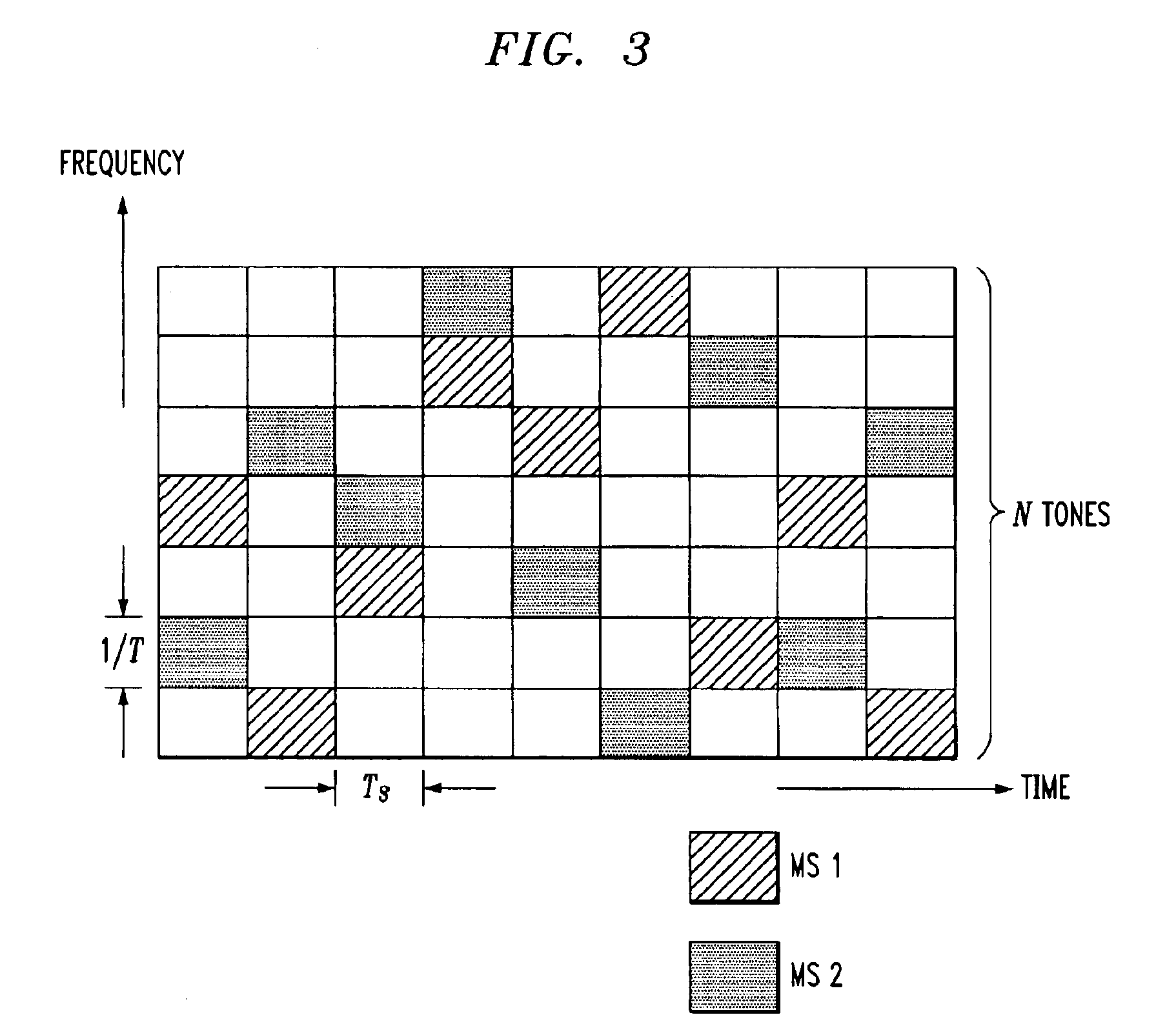Adaptive antenna array methods and apparatus for use in a multi-access wireless communication system
a multi-access wireless communication and antenna array technology, applied in diversity/multi-antenna systems, digital transmission, polarisation/directional diversity, etc., can solve the problems of inability to easily adapt adaptive antenna algorithms for traditional multi-access technologies such as cdma and tdma to ofdm-ssma, and the development of suitable adaptation algorithms. achieve the effect of improving the convergence of algorithms and reducing computational costs
- Summary
- Abstract
- Description
- Claims
- Application Information
AI Technical Summary
Benefits of technology
Problems solved by technology
Method used
Image
Examples
Embodiment Construction
[0019]The present invention will be illustrated below in conjunction with an exemplary multiple access wireless communication system based on orthogonal frequency division multiplexing and spread-spectrum multi-access (OFDM-SSMA). It should be understood, however, that the invention is not limited to use with only this particular type of wireless communication system.
[0020]FIG. 1 shows a portion of a cellular wireless system 100 in which the present invention may be implemented. The cellular wireless system 100 comprises a number of base stations and mobile stations. Each base station has a fixed location and communicates with one or more mobile stations in a surrounding geographic territory commonly known as a cell. As mobile stations move within the system, the mobile stations may pass from a cell associated with one base station to a cell associated with another base station. The portion of the system 100 shown in FIG. 1 includes two base stations, denoted BS 1 and BS 2, and five...
PUM
 Login to View More
Login to View More Abstract
Description
Claims
Application Information
 Login to View More
Login to View More - R&D
- Intellectual Property
- Life Sciences
- Materials
- Tech Scout
- Unparalleled Data Quality
- Higher Quality Content
- 60% Fewer Hallucinations
Browse by: Latest US Patents, China's latest patents, Technical Efficacy Thesaurus, Application Domain, Technology Topic, Popular Technical Reports.
© 2025 PatSnap. All rights reserved.Legal|Privacy policy|Modern Slavery Act Transparency Statement|Sitemap|About US| Contact US: help@patsnap.com



